I pull into our rendezvous point and finally meet Dan Whitney in person. Pinning him down through a series of phone calls has been like following a single raindrop through a storm. As a grafter in the springtime, he’s moving from orchard to orchard all over the state. Finally, in the wilds of Moxee, Washington, we connect and I hop into his truck. Even though it’s my first ride with Dan, his truck has the familiar dishevelment of a farm rig. Filled with dust from driving slow dirt roads through fields with the windows down, tools and extra supplies are on hand for troubleshooting at the work site, and of course the debris of snacks eaten in haste, because this rig is a second home in any location and leisurely daytime meals are virtually nonexistent this time of year. On we roll out east to where his crew is grafting today. They are transitioning Red Delicious to Red Honeycrisp.
Dan didn’t choose grafting, he was born into it. Just after World War II, there was a series of free classes in Yakima called Institutional on the Farm Training. One of those classes was all about grafting. His dad, Aaron Chester “Chet” Whitney, took that class. In 1948, he was working for another orchardist who was going to take out a block of trees when Chet suggested that he could try and graft it. It was a success. From that moment on, his service was in demand and Whitney’s Grafting was born. A few years later, Dan came into the world with a paintbrush in one hand and a grafting knife in the other. He started helping by painting the trees with sealant when he was very young, and thinks he’s been setting sticks since he was about 12.
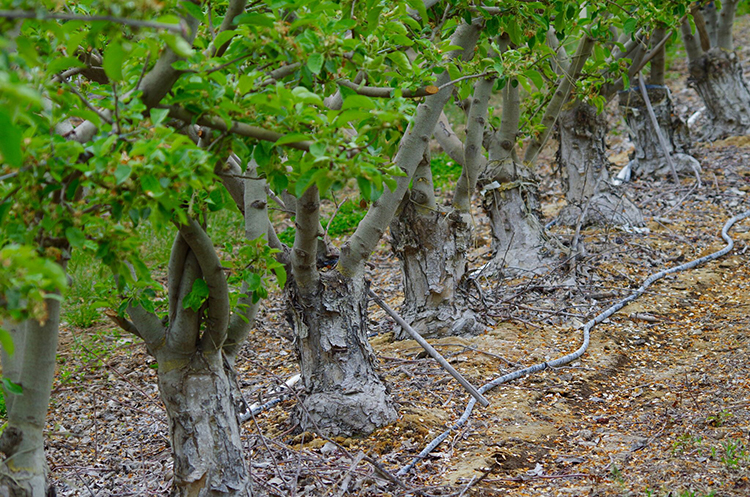 Apple trees grown from seed that bear delicious fruit are not easily found. A good eating apple is the result of a genetic lottery where desirable recessive traits like sweetness, good size and good color can muscle their way to the head of the phenotype. A seed produced from such an apple will not produce the same apple, but a bastard fruit of that apple and whatever else pollinated it, creating a new set of genes and an entirely new apple. Because the Power Ball of fruit doesn’t hit that often, this isn’t a good thing as more often than not, a tiny, bitter nugget of fruit is produced. Grafting creates clones. You can take wood from a great eating apple tree, graft it, and get genetically identical fruit produced as if it were from the original tree. All apple trees are grafted trees. Without grafting, apples would not be as ubiquitous and beloved as we now know them to be.
Apple trees grown from seed that bear delicious fruit are not easily found. A good eating apple is the result of a genetic lottery where desirable recessive traits like sweetness, good size and good color can muscle their way to the head of the phenotype. A seed produced from such an apple will not produce the same apple, but a bastard fruit of that apple and whatever else pollinated it, creating a new set of genes and an entirely new apple. Because the Power Ball of fruit doesn’t hit that often, this isn’t a good thing as more often than not, a tiny, bitter nugget of fruit is produced. Grafting creates clones. You can take wood from a great eating apple tree, graft it, and get genetically identical fruit produced as if it were from the original tree. All apple trees are grafted trees. Without grafting, apples would not be as ubiquitous and beloved as we now know them to be.
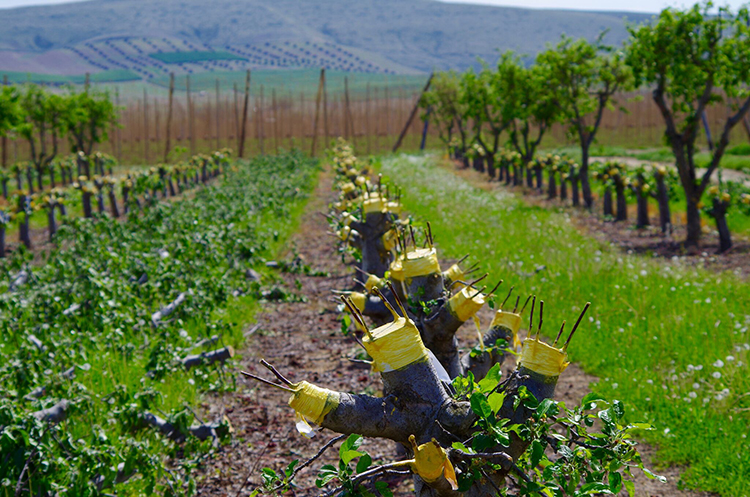 Dan and I hop out of the truck in a block that has just been finished. To the casual observer, it appears that the trees have been cut down. Nothing but the stump remains and the logged upper wood lies to the side. But as we get closer, I can see the tell-tale tape painted bright yellow with sealant, the finger like scion wood encircling the stump, looking like a supplicant’s hands, entreating the sky to grow.
Dan and I hop out of the truck in a block that has just been finished. To the casual observer, it appears that the trees have been cut down. Nothing but the stump remains and the logged upper wood lies to the side. But as we get closer, I can see the tell-tale tape painted bright yellow with sealant, the finger like scion wood encircling the stump, looking like a supplicant’s hands, entreating the sky to grow.
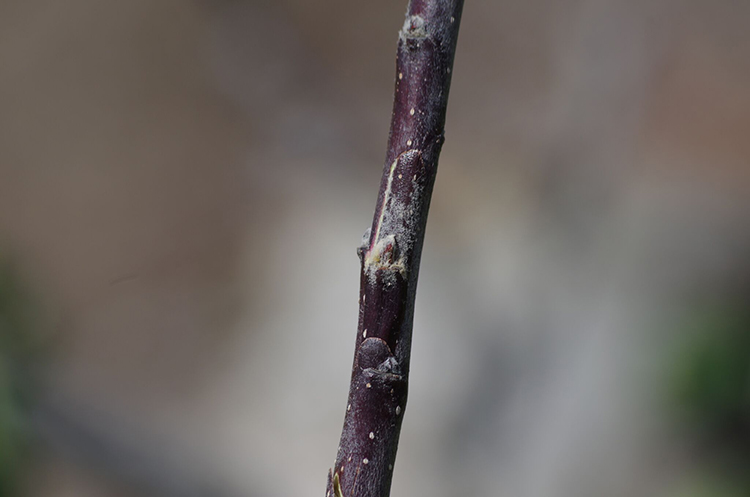 We start talking different kinds of grafts—bench, bark, side, budding. Dan whips his knife out, and on the logged wood deftly shows me several examples. Bench or whip grafts are typically what’s done on two similarly sized smaller pieces (whips), so are done sitting at a bench. This is how baby trees are made, by grafting specific cultivars onto different types of rootstock before they are planted. Bark grafts are what we are surrounded by now—a stump with scion wood placed in several places just under the bark and is the most commonly done graft out in the field. A side graft is placed into the side of an existing limb, and budding is cutting a bud area out and replacing it with a graft bud, so when the shoot takes off, it is of the grafted variety. There are different techniques he illustrates as well. He is adept with his small knife, and even here, on the fly, I can barely discern where two pieces of wood come together, so well joined they are, in example after example.
We start talking different kinds of grafts—bench, bark, side, budding. Dan whips his knife out, and on the logged wood deftly shows me several examples. Bench or whip grafts are typically what’s done on two similarly sized smaller pieces (whips), so are done sitting at a bench. This is how baby trees are made, by grafting specific cultivars onto different types of rootstock before they are planted. Bark grafts are what we are surrounded by now—a stump with scion wood placed in several places just under the bark and is the most commonly done graft out in the field. A side graft is placed into the side of an existing limb, and budding is cutting a bud area out and replacing it with a graft bud, so when the shoot takes off, it is of the grafted variety. There are different techniques he illustrates as well. He is adept with his small knife, and even here, on the fly, I can barely discern where two pieces of wood come together, so well joined they are, in example after example.
The dandelions are high and in seed, and there is a slight breeze. Were it not for the whine of chainsaws in the distance, it would be quite pastoral and belie all of the work getting done both to the trees and within the trees. We move to a different part of the orchard where the crew is at work. Men from the farm are ahead of the grafters with chainsaws cutting the tree tops down.
In this particular section, rather than going all the way down to the stump, the tree is being cut down to its various limbs just above the trunk. Dan tells me that this is because of the way the trees are currently spaced, the farmer wants them to grow post graft similarly to how they were growing before the graft. Each round top of newly exposed cut limbs will have several grafts embedded into the bark.
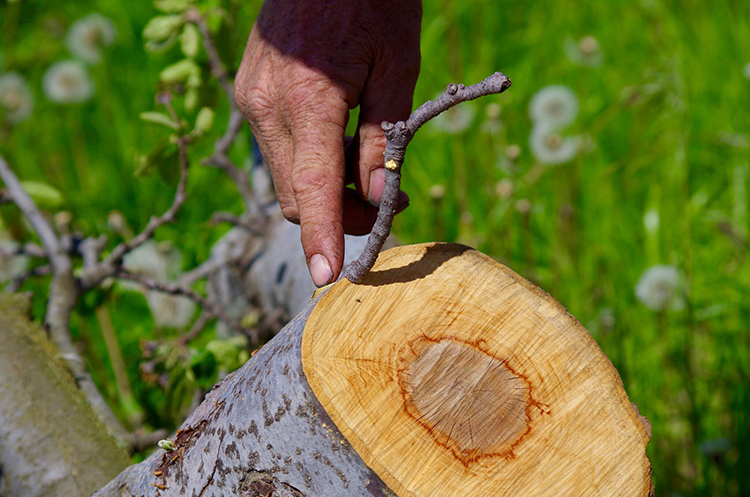
I watch as the bark is cut, and the scion wood placed. Their skill is evidenced by how easy they make it look—being good with a knife only comes with patience and practice. Some of these people have been with Dan for decades. Behind the knives come the tape. Long white strands fluttering in the wind as they are tamed by quick hands and wrapped around the limbs, covering the cuts in the bark. 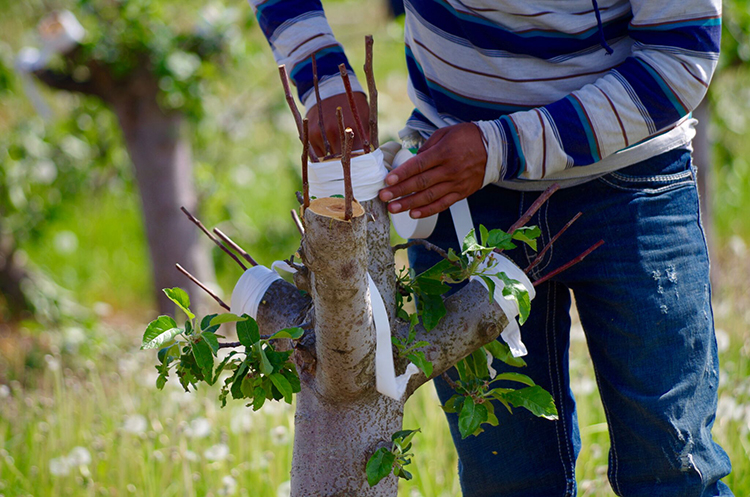
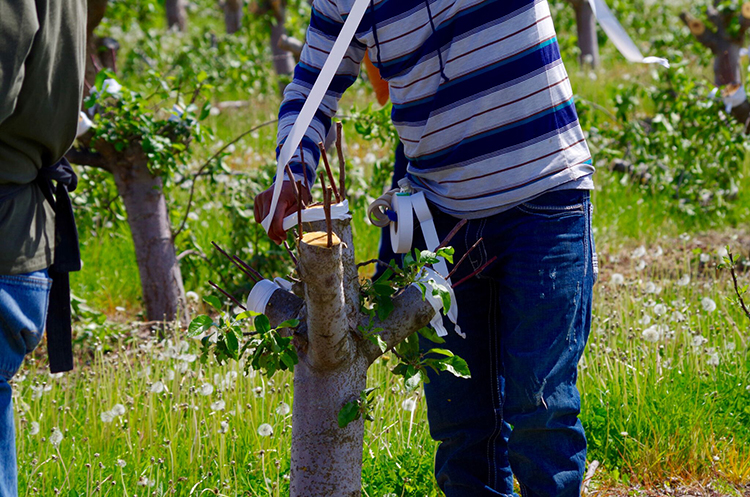
Next comes the grafting wax, a putty-like substance that is pushed around the insertion point, allowing no air in the graft hole. Lastly, comes the bright yellow sealant, to coat the entire area. All of these steps come together to create optimal conditions for the graft to take. A live cell area just under the bark—what is known as the cambium—of both pieces of wood need to intermingle and form a callus that will join the two pieces and create a common vascular connection so that nutrients will travel to the newcomer and inspire growth as if it had always been there.
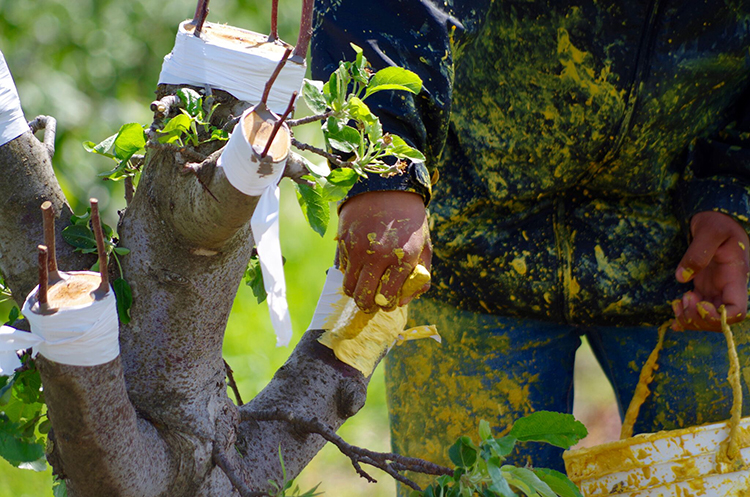 Dan drives me to a nearby orchard that he grafted last year, then to another that he did 4 years before. The amount of growth is amazing. The four-year-old trees don’t even look grafted unless you get up close and personal with the trees. He tells me that when he was in high school they set about 30,000 trees and thought that was a lot. This year he thinks it will be in the range of about 1.5 million. Taking over the business in 1983, he mainly works with apples, pears and cherries, and recently was recruited to the South for pecan trees, which has been working great as their season is earlier than ours.
Dan drives me to a nearby orchard that he grafted last year, then to another that he did 4 years before. The amount of growth is amazing. The four-year-old trees don’t even look grafted unless you get up close and personal with the trees. He tells me that when he was in high school they set about 30,000 trees and thought that was a lot. This year he thinks it will be in the range of about 1.5 million. Taking over the business in 1983, he mainly works with apples, pears and cherries, and recently was recruited to the South for pecan trees, which has been working great as their season is earlier than ours.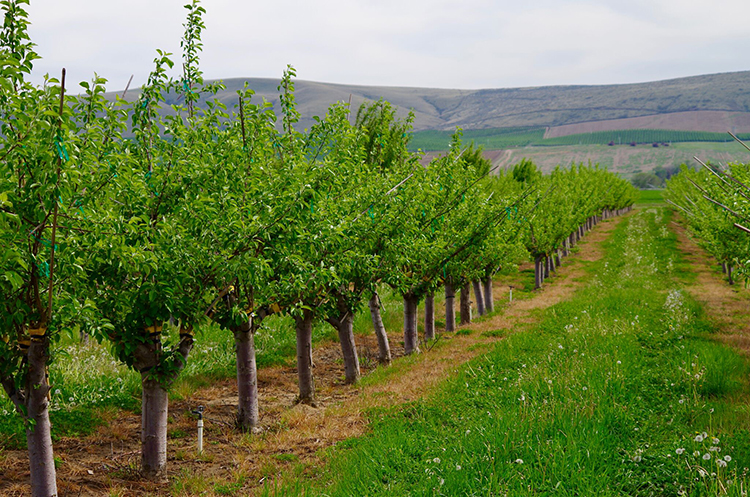
Grafting is a rare craft that has been going on for thousands of years. Seventy years ago, when Chet Whitney suggested he try out his newly acquired skill, he didn’t realize he would be starting a legacy that would actively find its way into the twenty first century. And its headquartered right here, in the Yakima Valley.
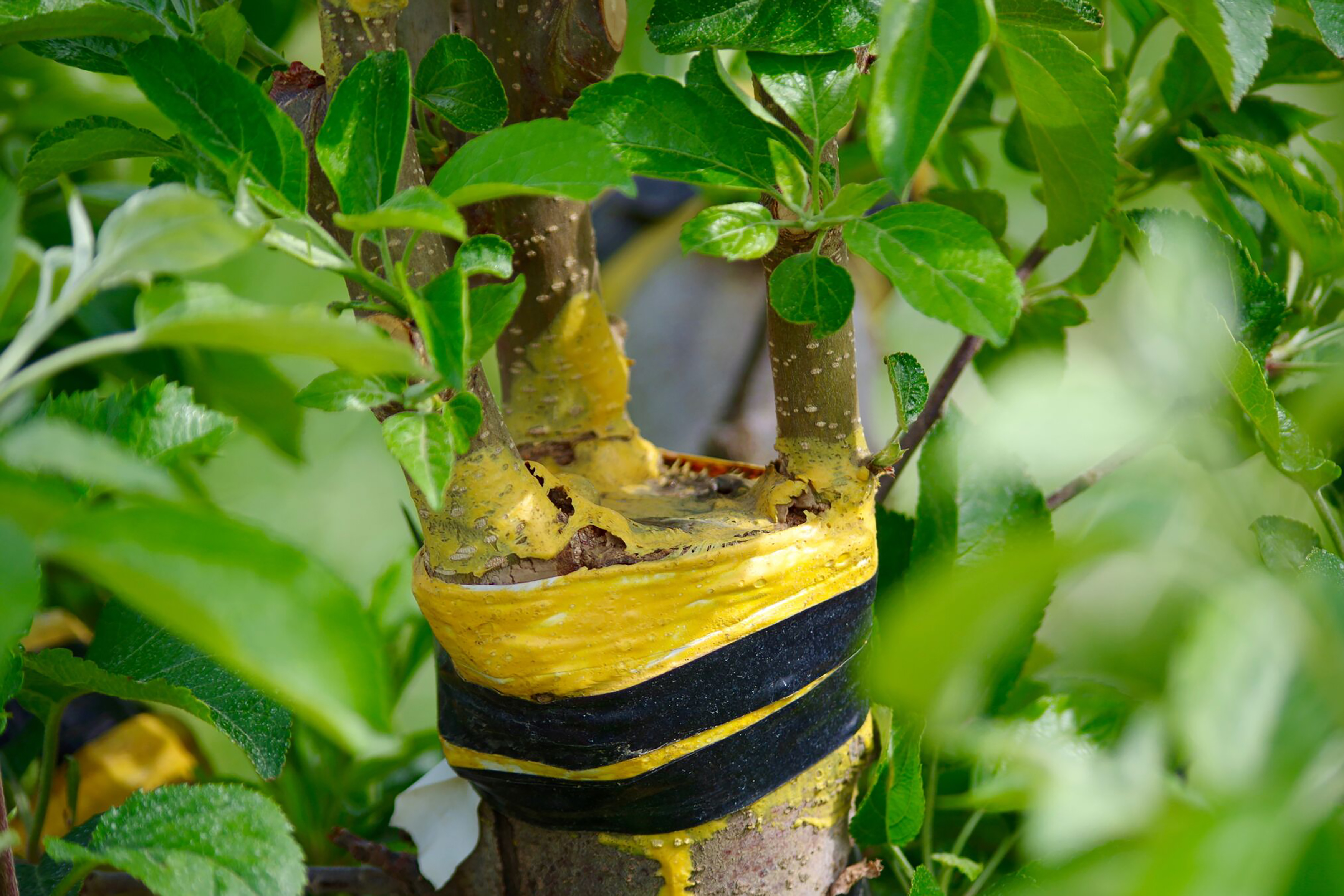





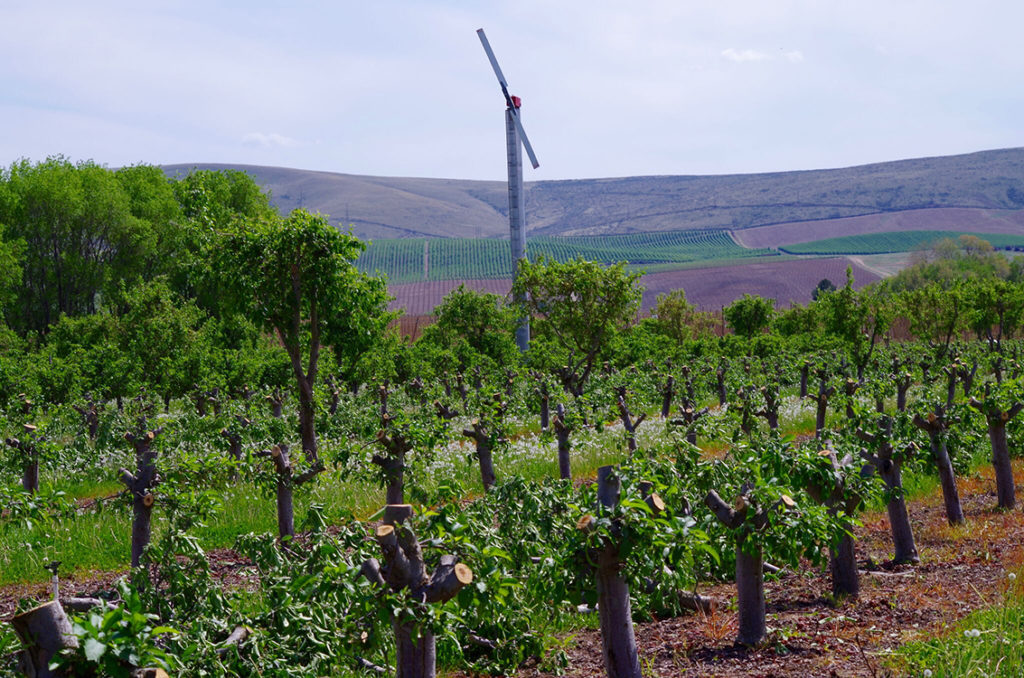
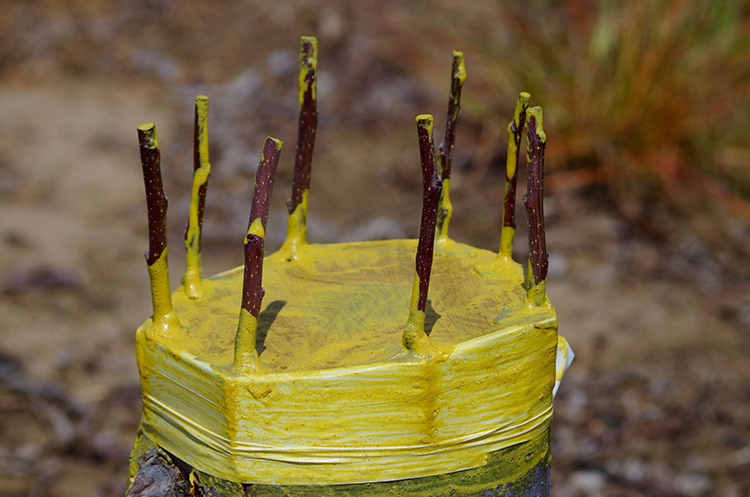

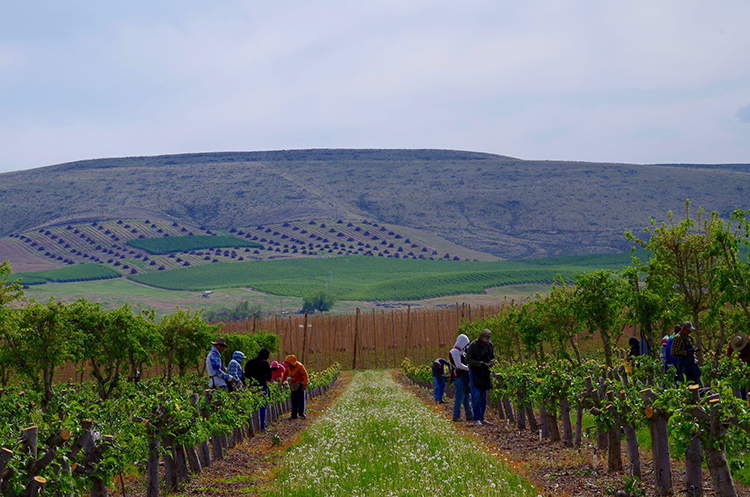
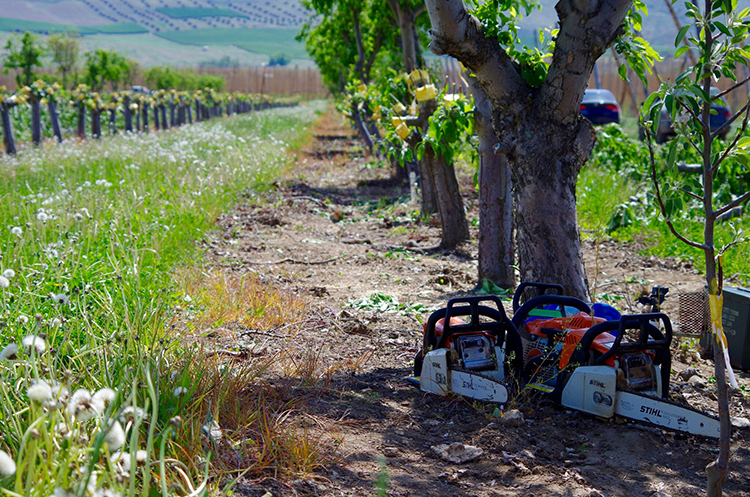
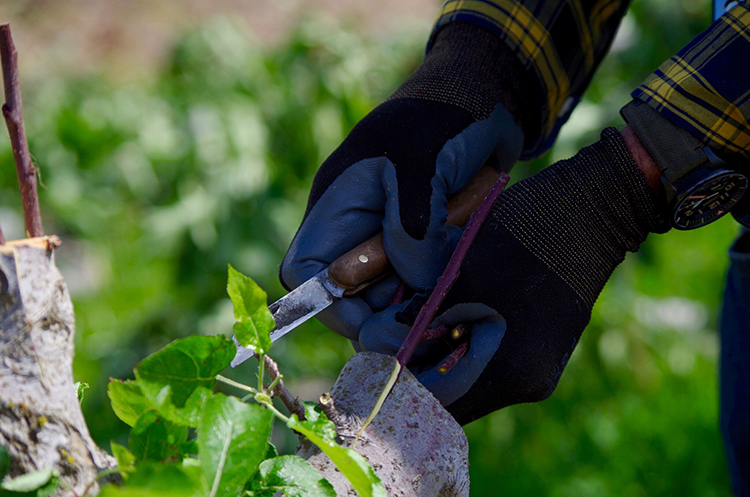
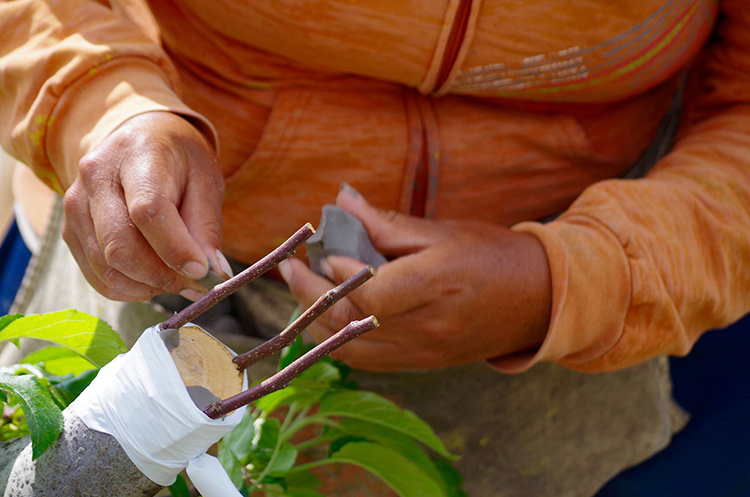

Rarely are Ag articles accurate. Very well done.
Thank you Rick, so glad you enjoy rooted stories! It was a great afternoon with Dan, grafting is an essential topic when it comes to fruit trees. If you ever have any story ideas for us, or are interested in guest writing a piece, we’d love to hear from you!
THANK YOU, thank you.
I finally have an answer to “ What is grafting ?” & “How is it done ?”
beautiful writing , as always. great job.
PS. I’m sending this to my creative writing instructor. I’d like her to focus on the first few paragraphs … what it FEELS like to sit INSIDE a farm rig in grafting season.
I thoroughly enjoy reading your articles. They are spot on and enjoyable to read.
Thanks for the feedback Patsy, I’m happy you like the article!
Thank you for catching the spirit of who my husband is and his passion for hearing!